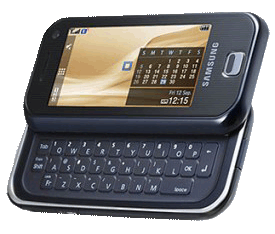|
|||||||||
| Previous page | Do you use a pop-up blocker? If so, please read this. | ||||||||
|
|||||||||
| Show Date: 2007.02.11 | |||||||||
Snapshots—better than everMost of the time I use a Nikon digital camera, but sometimes I don't want all the stuff that comes with a single-lens-reflex (SLR) digital camera. If I take the SLR with me, I will take extra lenses. The camera is large enough that it will require an extra bag (carry-on) and it's just more stuff to schlep around the city. What we need is a camera with a 3x (or more) zoom lens, sufficient quality for snapshots, and enough memory for a vacation or business trip. The images it creates must be—if not superb—at least sufficient not to be something I would object to. Oh, and it has to fit in a pocket. Easy? On a recent trip to New York City, I stopped by B&H Photo on Ninth Avenue at 34th Street and told them what I was looking for. And, by the way, it can't cost a lot because I don't have a lot to spend. For not a lot more than $100, I walked out with an Olympus FE-180. The FE-190 is the same camera, but with a special rechargeable battery. The FE-180 costs less and uses AA cells. It comes with 2 AA NiMH batteries and I have many more at home, so this was the right choice for me. The camera is about 3" wide, 2" tall, and no more than 1" thick at its thickest point (where the batteries go). There's no standard viewfinder, which I consider a shortcoming, but the LCD screen on the back is relatively large. The FE-180 includes "digital image stabilization", which the sales guy at B&H told me was useless. I already knew that, but the honesty was a nice touch. What Olympus, Fuji, and most other manufacturers call "digital image stabilization" is a programming function that causes the camera to boost its ISO setting so that it uses a faster shutter speed, but at the expense of adding noise to the image—a lot of noise. This is not image stabilization any more than digital zoom is really zoom. In the past, I've described "digital zoom" as "digital crop and ruin". It's nothing more than misguided marketing blather. But I know that the digital zoom described in the camera's specs is useless as is the digital image stabilization, so for me it's not a foul. If you're not familiar with the technology, I would consider it a personal foul. "Image stabilization" is a lie and so is "digital zoom". Note to Olympus: Just tell the truth. You have some decent cameras at reasonable prices. They have 3x optical zoom lenses. And that's it. For me, that's enough. I don't need image stabilization on a snapshot camera and because I know how to hold the camera steady when it's likely that the shutter will be slow. And I really don't like being lied to. A "feature" included with the camera is the "Advanced Manual" on CD. The camera comes with a quick-start sheet and with a manual that in several languages repeats information from the quick-start sheet. The "Advanced Manual" is nothing more than the manual that should have been printed and included with the camera. This "feature" also caused the sales guy at B&H to roll his eyes. This isn't the country's largest camera store for nothing. I've drifted far afield, though. I said that snapshots are now better than ever. That's because we can carry around 6Mpxl digital cameras with 3x optical zoom lenses and enough memory to take a couple of hundred high-resolution images for not a lot more than $100. The specificationsThe camera itself comes with a useless amount of built-in memory, but it also has a memory slot for XD cards. These are tiny and inexpensive. A 512MB card can be had for about $20, a 1GB card (twice as large) for $30. The tiny amount of built-in memory is probably there so that the manufacturer can omit an external card and still provide a camera that will take images out of the box. Manufacturers used to include a 16MB or 32MB card that many users probably just threw away. Is a 6Mpxl Olympus snapshot camera better than a 6Mpxl Nikon D100? In a word, no. The D100 sells for more than 5 times the cost of the Olympus snapshot camera, so something must be missing. And it is.
All of these shortcomings are OK. I knew about them when I bought the camera. It's a snapshot camera, after all. Something that I can carry along with me for use when something that should be photographed presents itself. If you're looking for the highest quality digital images, buy a Nikon, Canon, or Olympus SLR (or, if money and weight are not concerns, a Hasslebald with a digital back). If you're looking for a point-and-shoot digital camera, you'll find dozens of acceptable choices priced between $100 and $500. You'll find quasi-SLRs from $500 to nearly $1000. And you'll find true SLRs from about $1000 and up. Way up. Does anyone still use film?On June 29, 2003, I said "This is the year you'll buy a digital camera if you don't already own one. Trust me. It's time. If you're a 'snapshot' photographer who never has a print enlarged beyond the 4x6 that you get from the grocery store, you can have a digital camera that suits your need for less than $200. And if you're a 35mm SLR maven, you can now sell your digital soul for 'just' $2000." Now, a little less than 4 years later, digital SLRs are available for less than $1000 and cameras that are far better than the $200 cameras of 2003 are priced at $100. What has this meant for film? Here is one company's story. Eastman Kodak initially tried to fight digital photography, and rightly so. Film was far superior to even the most expensive early digital cameras. Why pay several thousand dollars for a camera that created pictures you couldn't tell from something that came out of a 110 camera? (Remember 110 film? The negative was about the size of Super-8 film and the images were horrid.) But then Kodak realized that it wasn't "a film company" but "a picture company". Management scrambled to get behind the digital revolution. Kodak may survive, but only at the cost of tens of thousands of jobs. As photographers, both amateur and (increasingly) professional, switch from film to digital, there is little need for film. Little need for plants that manufacture film. Little need for plants that process film. Little need for plants that process prints. Having prints made is rare these days. We share photographs by e-mailing them. Or by putting them on-line. We look at them on portable electronic devices. Now when granny wants to show off pictures of the grandchildren, she can pull out an Ipod and show hundreds of images, not just one or two that fit in a wallet. The changing marketYears ago, I said that still-camera film would follow the pattern set by movie film when hand-held video cameras arrived. Movie cameras disappeared almost overnight because people no longer had to pay $10 for every 3 minutes worth of moving picture time and they didn't have to splice those little reels of film together. Eastman Kodak has cut something like 30,000 jobs over the past few years and will shrink by another 10,000 this year. For film vendors, digital photography has been catastrophic. Everyone in the industry knew that digital would kill film sales, but most of us thought it would take longer. Some of the European film vendors have gone out of business. Kodak has been investing in digital for the past decade, but the demand for physical prints seems to be far lower than anticipated. Kodak acquired the online Ophoto service and renamed it KodakGallery. About the same time Kodak announced the reduction of 10,000 jobs, Fuji made a similar announcement. Japan's biggest film manufacturer lowered its projected earnings estimate by 77 percent and announced that it will cut 5,000 jobs. Production of color film will be cut sharply because the market no longer exists. Nerdly NewsApple sees the future as the RIAA clings to the pastDigital rights management (DRM) gets in the way of those who purchase music from sites such as Apple's Itunes Music Store, but DRM does nothing to deter high-volume pirates. As I've said before, the business model that inconveniences your customers while having no effect on your enemies is not a viable long-term business model. Treating your customers as if they are enemies rarely builds loyalty. This week, Apple's Steve Jobs said that Apple would drop its FairPlay DRM "in a heartbeat" if the major record labels would license their music without requiring copy protection. Warner, EMI, Sony, and Universal demand DRM on music sold online but simultaneously sell billions of CDs containing unprotected tracks. Jobs questions the logic of that stance. Warner Music CEO Edgar Bronfman doesn't like the idea. In a conference call with analysts, Bronfman called for the continued use of DRM. "The notion that music does not deserve the same protection as software, film, video games or other intellectual property, simply because there is an unprotected legacy product in the physical world, is completely without logic or merit." The RIAA has railed against Jobs, too, as expected. Some music companies, though, seem to have at least a few forward-thinking brains in the shop. EMI has apparently been talking with online retailers about possibly selling its entire digital music catalog in MP3 format without copy protection. A report in the Wall Street Journal says that the idea has at least been floated internally.
|
|||||||||
|
|||||||||
| Home • Programs • Reference • Subscribe to Technology Corner News • Contact Us • Terms of Use ©2007 by William Blinn Communications. All rights reserved. |
|||||||||
This is the only ad you'll ever see on this site. It's for my website host, BlueHost in Orem, Utah. Over the past several years, they have proven to be honest, reliable, and progressive. If you need to host a website, please click the banner below to see what BlueHost has to offer. |
|||||||||

|
|||||||||

 Samsung may beat Apple to market
Samsung may beat Apple to market
